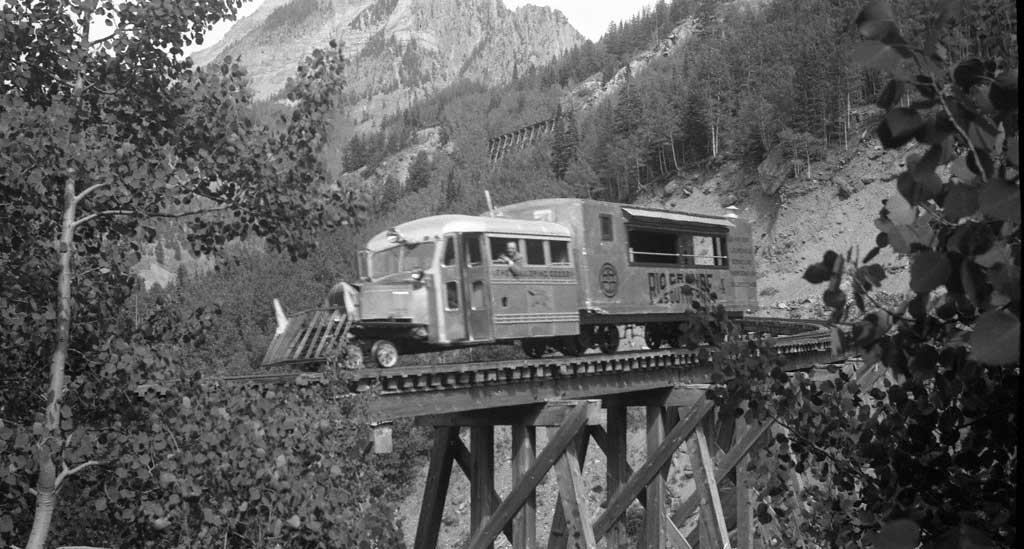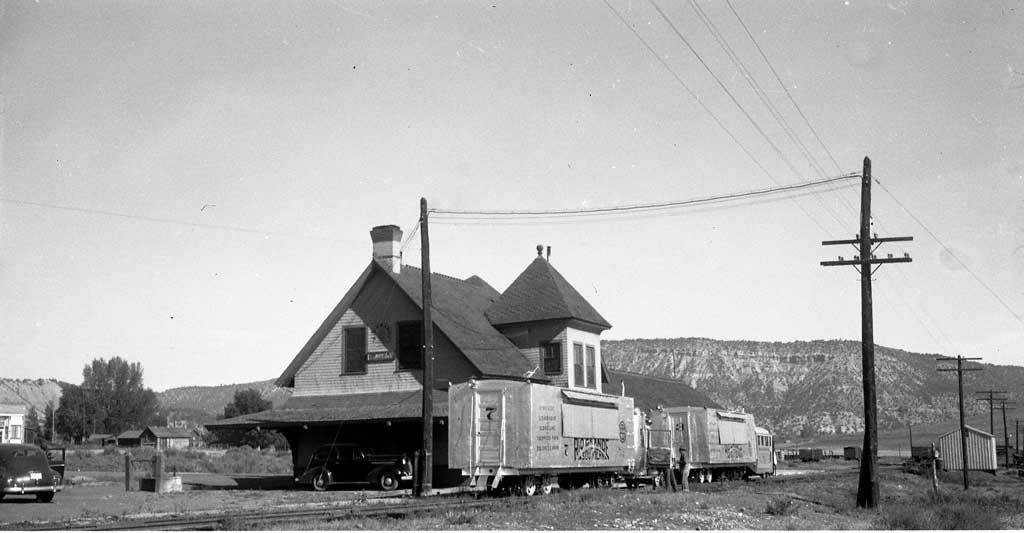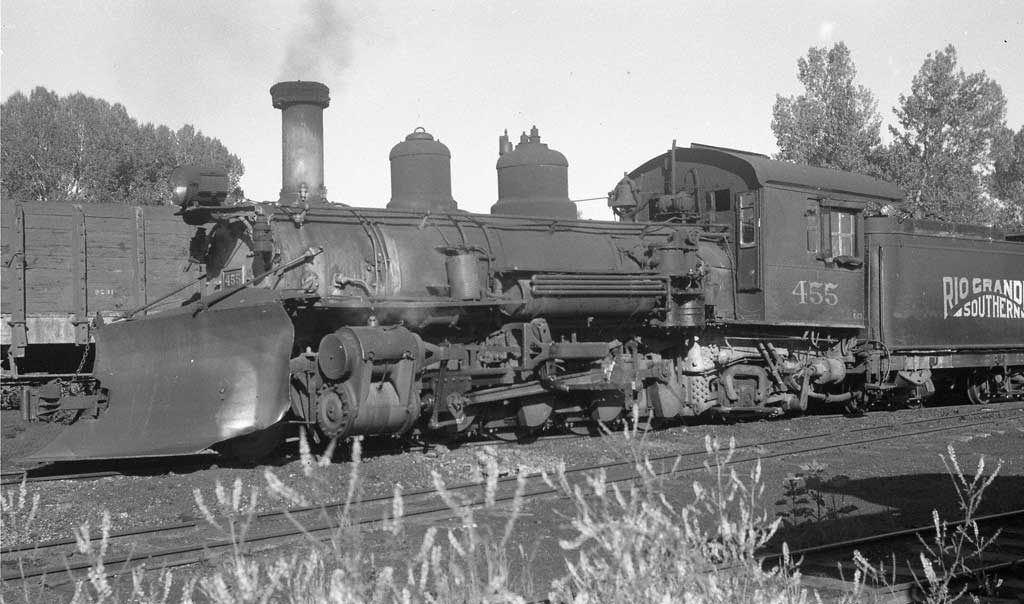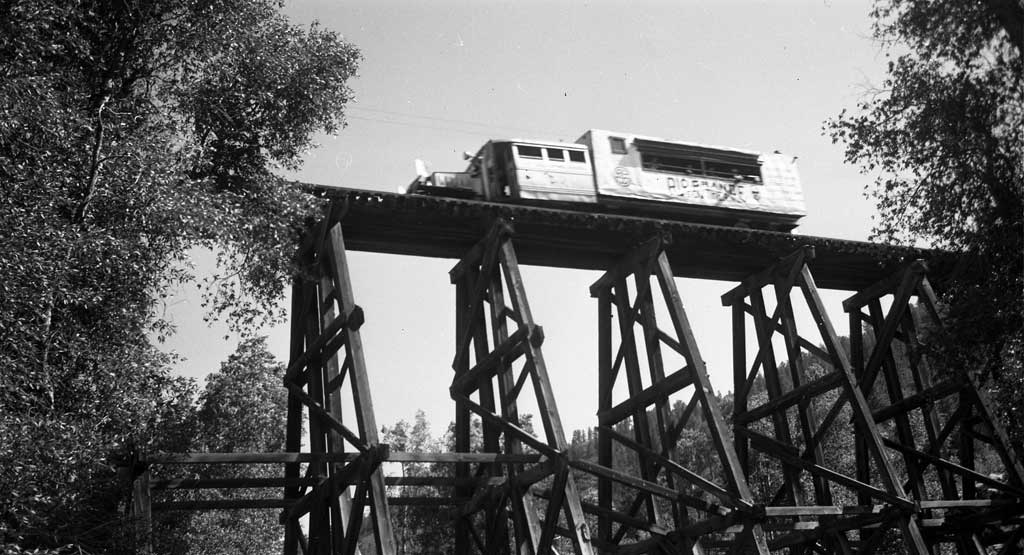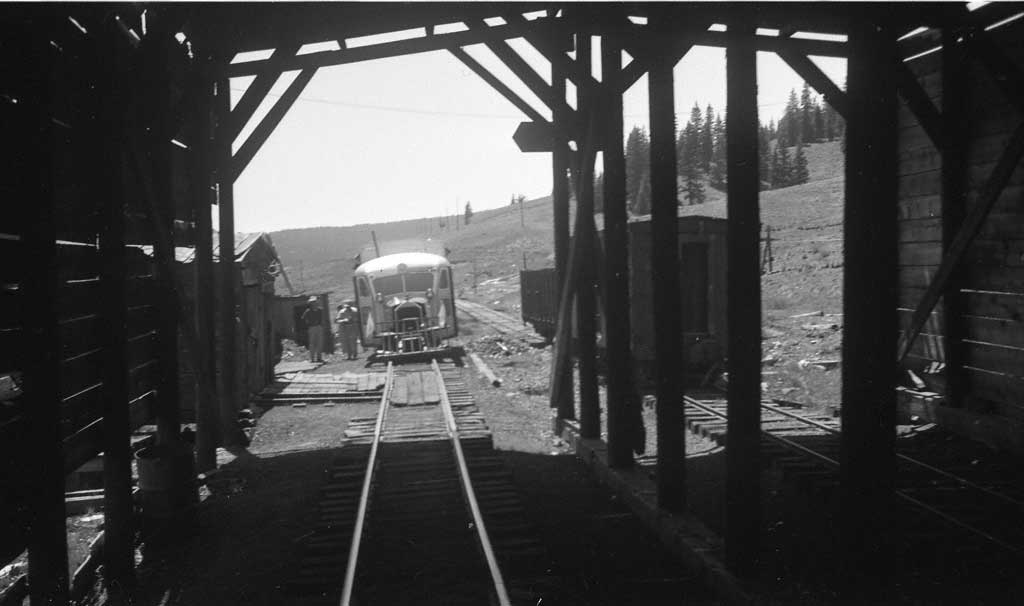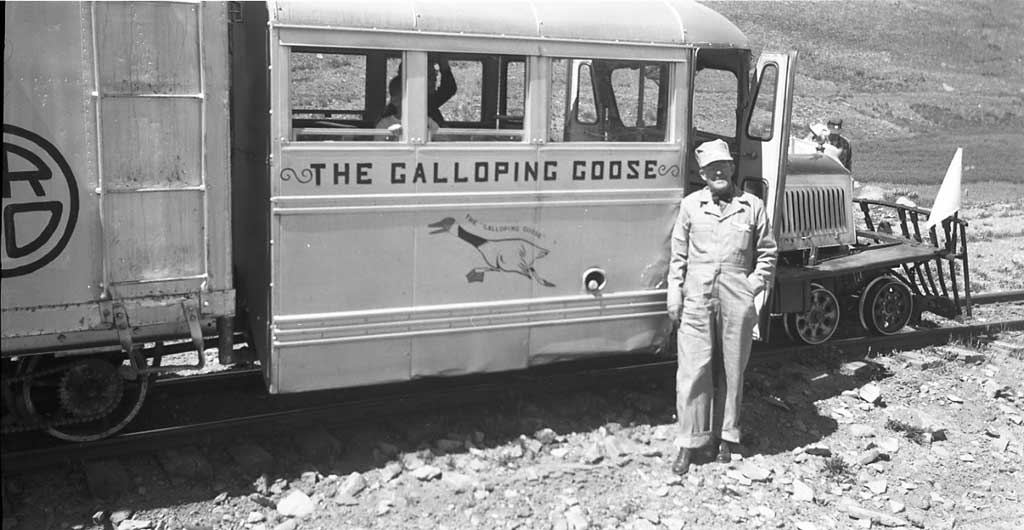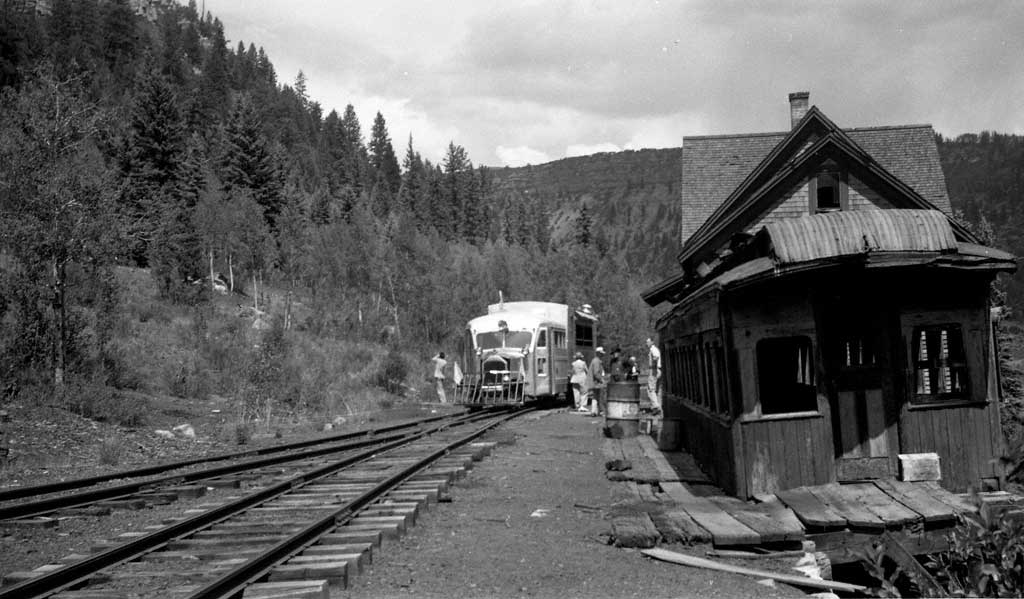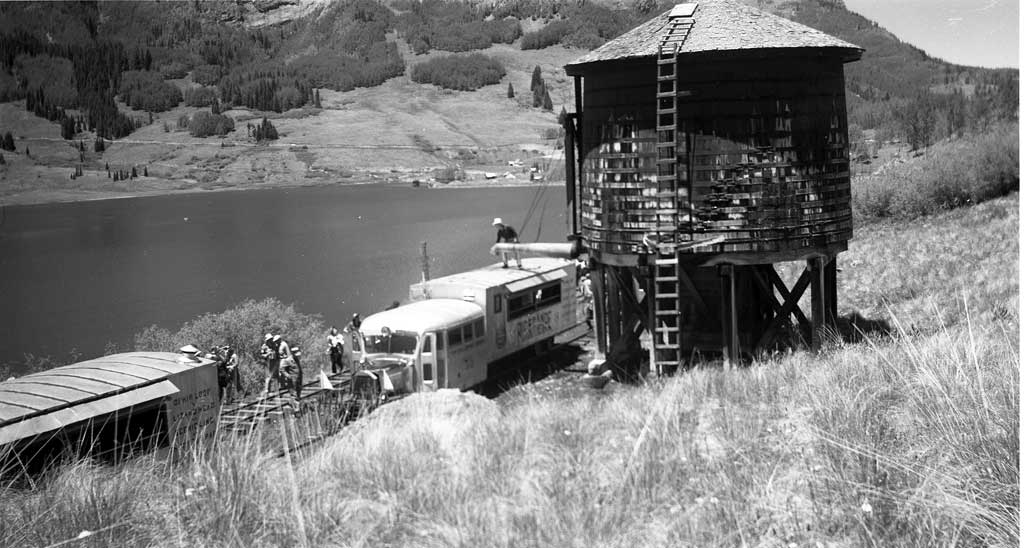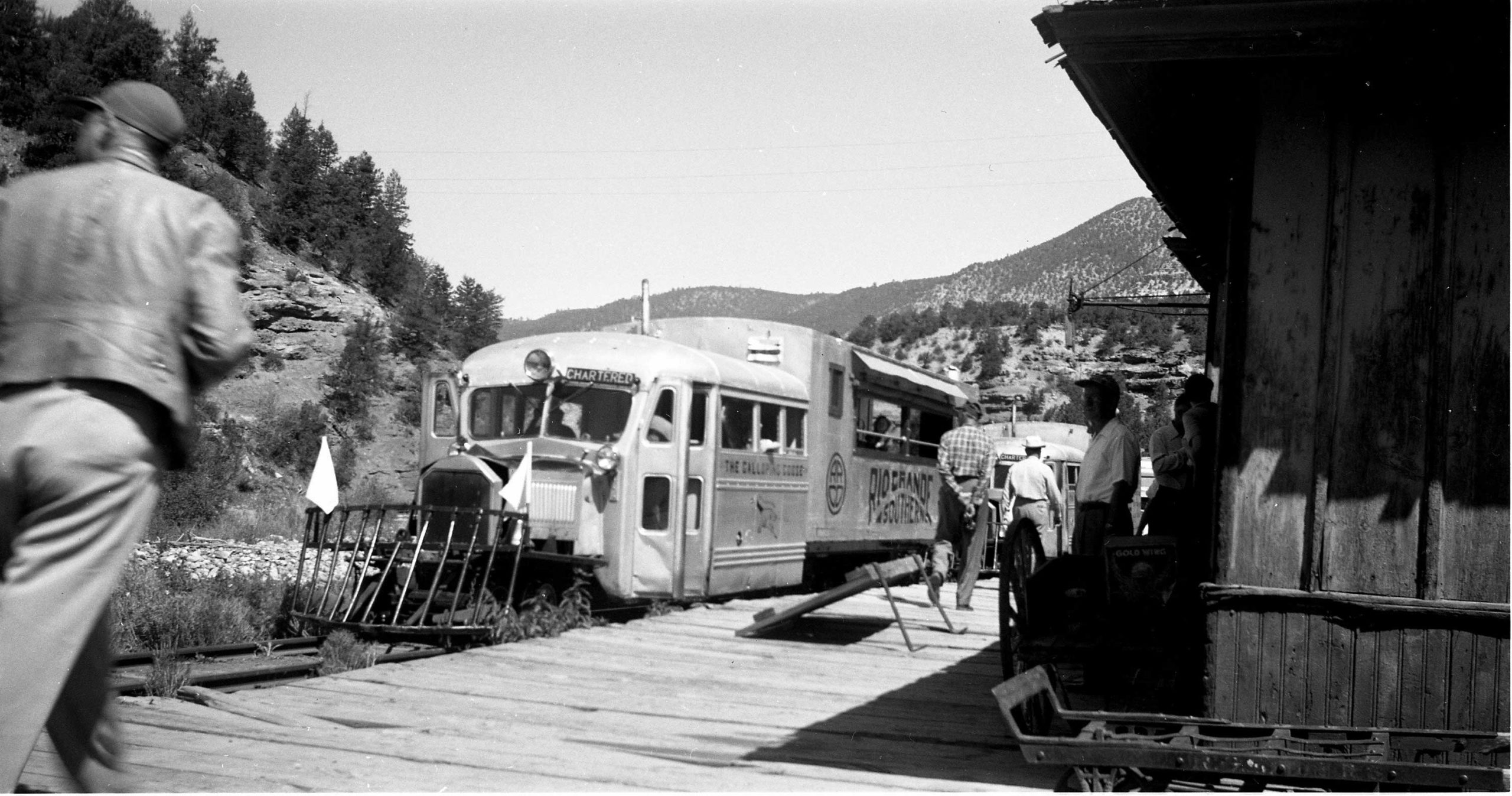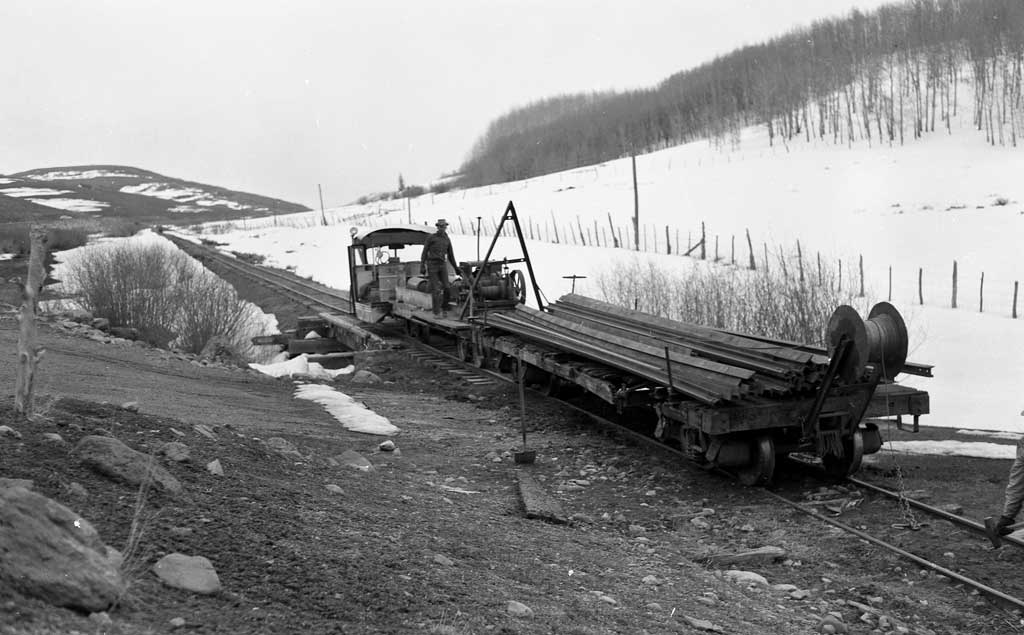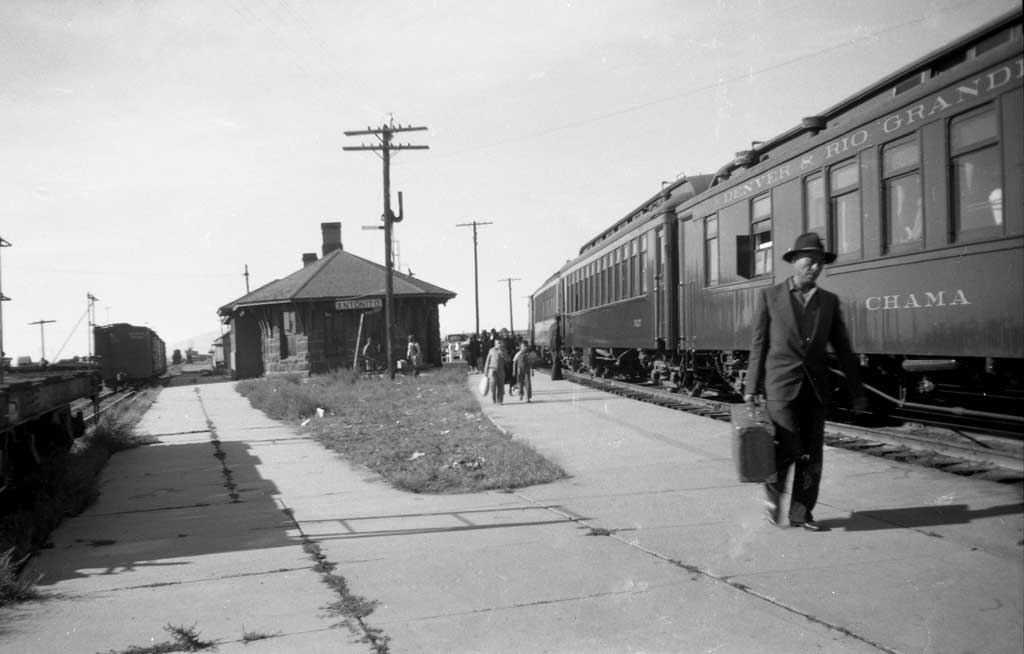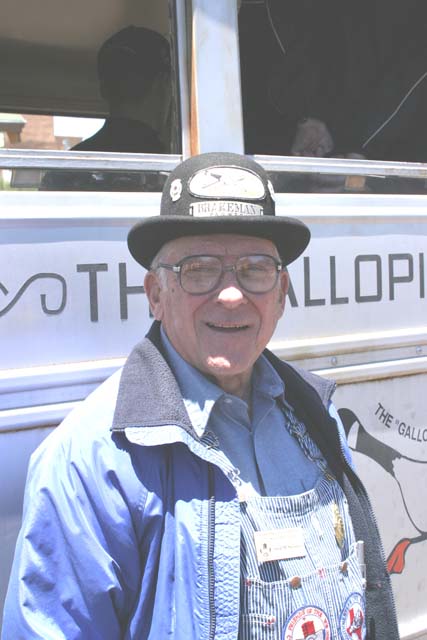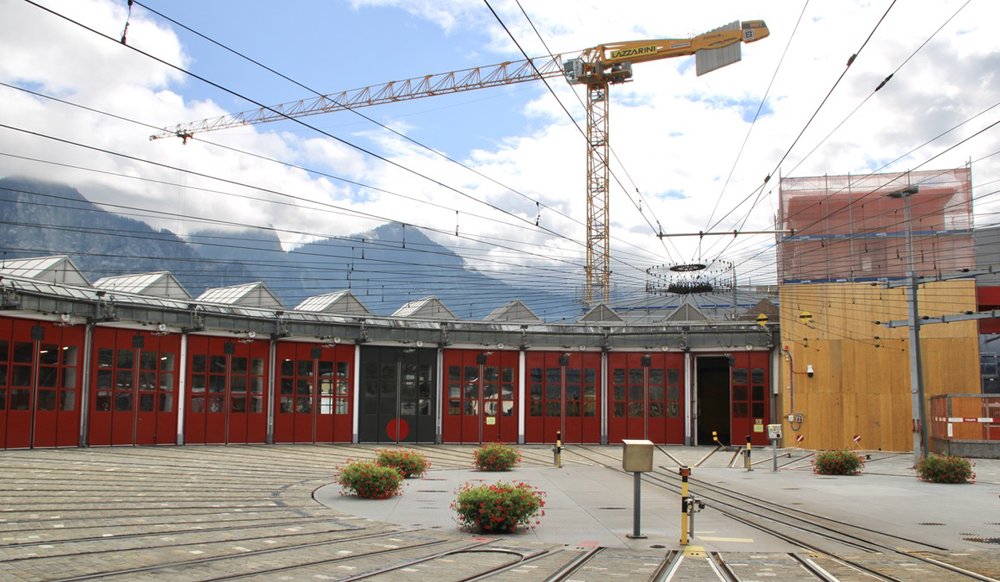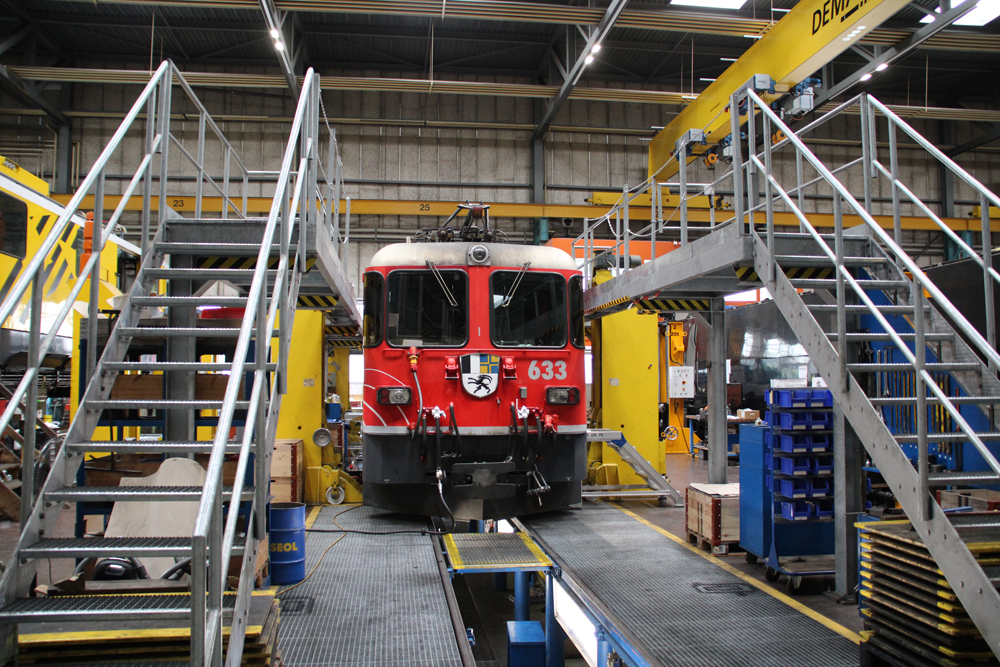Springer recalls details of his family’s first trip on a Goose out of Ridgway, Colo. His negative envelopes confirm the date: August 19, 1950. “My family, five people, drove up,” he says. “‘That is not enough,’ said Ed Randow, Rio Grande Southern’s superintendent. Bob Christian, a professor at Wichita State and family arrived, bringing the total to nine people. That was enough to run Goose No. 4 that day. Off we went to Lizard Head Pass.” Springer adds that Henry Wolford operated the Goose on this and other trips the family made.
The railroad’s seven Geese, motorcars built from 1931 to 1936 in its Ridgway shops from Pierce-Arrow and Buick car bodies, substituted for more expensive steam trains. They were in scheduled service until 1949, when the Rio Grande Southern lost the mail contract, followed by the loss of its freight business. In 1950 and 1951 the Geese operated excursions. The railroad shut down in 1952. David P. Morgan, former Trains editor, suggested in July 1952 that the Rio Grande Southern could have been “A Railroad National Monument.”
Springer’s favorite railroads are represented in his collection. He captured images of narrow gauge roads, such as, Rio Grande Southern, a 3-foot gauge line in southwestern Colorado, and the 2-foot, 6-inch Patagonia Express in southern Argentina. He and Dale have been on the Express four or five times. “It is an unbelievable railroad, 402 kilometers long, the closest thing still running that is a replica of Southern Pacific’s narrow gauge in California. Both are in quasi-desert areas and parallel mountain ranges, the Andes in Argentina versus the Sierras in California. Only the gauge is different, 3 feet versus 2 feet 6 inches,” he says.
Fred Springer’s volunteer work for the Friends of the Cumbres & Toltec, beginning after he retired, involved a Goose, which he caught on film. He was rear brakeman on Goose No. 5 when it started operating out of Chama, N.M., beginning in 1998. His projects included the rebuilding of the Chama stock pens and helping match a Save America’s Treasures grant to rebuild locomotive No. 463, among others. Springer served as a Friends volunteer at Nevada City-Silver City, Mont., on the Alder Gulch Railroad in 2009 and 2010. The Friends contributed sweat equity to the Montana Historical Commission to get some of its items in shape in exchange for surplus trucks and other material. Tim Tennant, president and CEO of the Friends, had high praise for Springer’s contributions, calling him “a staunch supporter, not only from a monetary resource, but he gives of his time as far as volunteering.”
Springer also helped the Galloping Goose Historical Society of Dolores, which restored No. 5, financially and administratively.
The city of Temple, Texas, named a park in his honor in 2011, recognizing his contributions to the development of its Railroad and Heritage Museum. The park is next to the Santa Fe depot, where the museum is located. Springer and his wife moved to Salado, near Temple, in 1980. Today, they live in Santa Fe, N.M. They have three children: Kathryn Kuddes of Allen, Texas, Paul Springer of Jackson, Wyo., and Carol Luttrell of Santa Fe, N.M., along with three Luttrell grandchildren.
When he donated his library and sizeable timetable and pass collection to the Temple museum in 1992, he personally funded an archivist for several years to ensure the materials’ proper cataloging and preservation. He recognizes that not everyone has the capability of providing such funding but to the extent possible he hopes all donors of collections would attempt to provide or find funding to support their donations.
Springer is a native of Washington, D.C., and grew up in Houston, Texas. He graduated in 1949 with a degree in engineering from Missouri School of Mines in Rolla, Mo., and worked for Mobil Oil Corp. and subsidiary companies from 1949 until retirement in 1985.
Railroad magazine profiled Springer in its May 1973 issue as “Interesting Railfan No. 125.” Editor Freeman Hubbard wrote about Springer’s travels with friends for photography, especially Everett L. De Golyer Jr. of Dallas, Texas, who suggested to Springer that locomotives and trains are dramatic, but do not tell the full story of railroad transportation. “At Everett’s suggestion he rolled back his horizon, emerged from the parish into the empire, and begin clicking his shutter at other phases of railroading,” Hubbard wrote.
Before Springer traveled extensively overseas, he had formative experiences with friends in the U.S. and Mexico. He and a teen-aged neighbor, Francis Winters, rode the narrow gauge out of Alamosa, Colo., and camped near Cumbres Pass. Springer took long train trips with Bill Schaeffer of Houston. In 1961, a rush of business prompted three Texas short lines to operate steam again, leading Springer, Joe R. Thompson, and George Werner to record them on film. The three also went to Mexico and across the South to photograph steam. In New Jersey, he joined a live steam group.
Springer’s remarkable experiences have resulted in a remarkable collection, worldwide in scope, but with a special emphasis on his attraction to the Rio Grande Southern, its unique Geese, and the narrow gauge empire.
His railroad photographs, given to the Center for Railroad Photography & Art along with a substantial donation to catalog and preserve them, ensure that future generations will be able to see and enjoy what he enjoyed, especially the Geese. This gift includes about 80,000 color slides and 7,500 black-and-white negatives.
JOHN GRUBER is a long-time Trains contributor, founder and president of the Center for Railroad Photography & Art, and editor of Railroad Heritage. He has been a freelance railroad photographer since 1960, and received awards from the Railway & Locomotive Historical Society in 1994 for lifetime achievement in photography and in 2010 for an article about Lucius Beebe and Charles Clegg.





